#Kiku Ningyo
Explore tagged Tumblr posts
Text
Continuing the celebration of Hello Kitty's 50th birthday! Kiku has found a popup cafe that serves all kinds of tasty themed treats for the occasion. Miwa meets her later to help her with the macarons. <3
Waffles and strawberry milk:


Macarons:


The Miniverse Hello Kitty items are so adorable, and perfect for 1/6 scale dolls!
#my plastic life#tenderwolf#doll photography#one sixth scale#azone international#azone pure neemo#azonejp#hello kitty#hello kitty 50th anniversary#kiku ningyo#anime doll#mga miniverse#miniverse#miniverse hello kitty#myfroggystufffanpics
13 notes
·
View notes
Text

Traditional event “Kiku Ningyo” (Chrysanthemum Doll) Festival is now being held at Yushima Tenjin
Chrysanthemum Doll
0 notes
Text
My fangan classes as of now
I now have four classes, 64 characters. I still have to give everyone names in the 3rd and 4th classes as well as figure out talents for Daisuke and the 2nd and 4th protags.
Class #1:
1. (Protag) Voice actress - Kasumi Sasaki - she/her
2. Gardener - Mia Akiyama - she/her
3. Scientist - Itsuki Kita - he/him
4. Birdwatcher - Archie Reid - he/him
5. Dentist - Aimi Fujimoto - she/her
6. Comedian - Rokuro Himura - he/him
7. Diver - Haruka Nakano - she/her
8. Blogger - Yamato Nishimura - he/him/they/them
9. Ice skater - Aiia Konstaninov - she/her
10. Model - Hayate Matsushita - he/him
11. Interior designer - Ayane Tuskuda - she/her
12. Tattoo artist - Ryuu Yamazaki - he/him
13. Translator - Luca Brilhart - he/him
14. Racecar driver - Shun Oshiro - she/her
15. Taxidermist - Kuroi Akuma - he/him
16. Party planner - Lulu Eucard - she/her
Class #2:
1. (Protag) he/him
2. Drag Queen - Julian Tash - he/him (she/her when in his stage persona, Julie Diamond)
3. Poet - Reo Aikyo - he/him
4. Pop dancer - Sara Kawaguchi - she/her
5. Chess player - Yuuto Inoue - he/him
6. Archer - Mayumi Shibata - she/her
7. Ringleader - Masuyo Fujioka - she/her
8. Puppeteer - Ningyo-shi - he/him
9. Roller skater - Akira Kasokudo - she/her
10. Skateboarder - Aiko Kasokudo - he/him
11. mathematician - Kiku Takahashi - she/her
12. Hockey player - Andre Willis - he/him
13. Lawyer - Kunio Virtanen - he/him
14. Kick boxer - Lily Arakaki - she/her
15. Seamstress - Chikako Iwasaki - she/her
16. Paleontologist - Kaseki Azuma - she/her
Class #3:
1. (Protag) Unlucky student - he/him
2. Mall santa - Nick Claus - he/him
3. Pitchman - Bill Schmidt - he/him
4. Cup stacker - she/her
5. Geometric artist - he/him
6. Vocabulary - he/him
7. Furry - she/her
8. Pirate - he/him
9. Cashier - she/her
10. Dog walker - he/him
11. Hugger - she/her
12. Hindsight - she/her
13. Whistler - she/her
14. Tourist - she/her/they/them
15. Yo-yo-er - she/her
16. Vape master - he/him
Class #4:
1. (Protag) she/her
2. Jockey - Tsuikyu Fugyne - she/her
3. Archer - Mayumi Shibata - she/her
4. Daisuke Sato - he/him
5. Dart player - he/him
6. Game show host - he/him
7. Historian - she/her
8. Drummer - he/him
9. Pyrotechnician - she/her
10. Undertaker - he/him
11. Farmer - she/her
12. Candle maker - she/her
13. Exterminator - he/him
14. Suntwoman - she/her
15. Reporter - he/him
16. Surfer - he/him
#id like to do more with them#but im just not motivated#cuz no one is interested :/#txt w drex#fanganronpa
4 notes
·
View notes
Text
Happy New Year! 2025 is officially upon us! Kiku decided to stay on her home balcony this year to partake in hatsuhinode (watching the first sunrise of the year). It's a bit chilly this morning, so she broke out her red sakura coat to stay comfy. :) Behind her, you can see traditional Japanese New Year items such as the shimekazari (ornaments consisting of a sacred rice rope, pine, and a bitter orange as a symbol of posterity hung above doors in the home to invite gods of good fortune and to ward off evil spirits) and the shimenawa (sacred rope to purify ritual spaces and ward off evil spirits).


#my plastic life#tenderwolf#doll photography#one sixth scale#azone international#azone pure neemo#azonejp#kiku ningyo#japanese new year#japan#hatsuhinode#new year#year of the snake#anime doll#myfroggystufffanpics
7 notes
·
View notes
Text
I did a thing... actually, I did several things. :D My ani-ME (anime doll version) needed manga in her house, so of course I had to make mini Inuyasha manga! I've done this before, but this time it's different... I didn't do miniature versions of the Viz BIG volumes. Nope, I did all 56 original Japanese volumes. Because ani-ME is in Japan, so she must have the original volumes!!! :D What a task this was - because the volumes are so old, it's hard to find high resolution pictures of them online. And even if you do, many times it's just the front, not the back and definitely not the spine. I found some, but then the front and back cover colors were completely different, some had text and graphics cut off from what was most likely a scanned image, the colors were inconsistent between various websites, some colors were clashing badly due to low quality resolution, etc.
So I literally made a template in Photoshop of the real size of the original manga (obtained via Amazon) and rebuilt EVERY. SINGLE. ONE. from scratch. I was able to find a site with all the original cover photos, and then I found the most high resolution cover I could find to duplicate the pattern that's on all books (colors vary), recreated the logo for each book (the character symbols and the gradients are all different for each volume), redrew the SS Comics logo that's on all books, and I even replicated each individual barcode. Because I'm nothing if not a consistent perfectionist. :D
For the backs, I used the images I found and just copied and pasted the characters and Japanese text, and for the teeny tiny characters I used the brush tool to trace over them. Even though I knew you probably wouldn't be able to see them in such a small scale, no way was I leaving them out! Consistency, darn it! :D
For the spines, I found complete sets on eBay and used a photo of the spines from those auctions as a template. I redid everything on the spine except the character head at the top of each, which is copied and pasted from the eBay files. They're definitely pretty low resolution, but hopefully it's not noticeable at such a small scale.
And the volume numbers? Try as I might, I could NOT find a font that matched them. So I got the most high resolution volumes I could find and made number templates... so each time I needed one of the volume numbers, I'd just use a color overlay on it and plop it where it needed to go on the front and spine.
Then the fun part - resizing them all to 1/6 scale. They're a little over an inch tall right now. And because they're not very thick in the spine, wrapping the covers around foam board to mimic pages wasn't working. So I had to make pages... for 56 volumes LOL. I just took my cover template, sized it down, and made it a blank white with a black stroke so I could see where to cut. I could fit 11 mini pages in one row across a regular sized sheet of printer paper (I used cardstock for extra thickness and stability), and I could fit like six rows on a sheet. I was able to fit 11 pages in one volume to allow the spine room, so 56 volumes x 11 mini pages each = 616 total pages I wound up cutting, then stacking and gluing together. But, of course, that wasn't a perfect fit, as the pages, despite being sanded down to be completely straight and smooth, poked out of the covers. So I had to wrap the covers around the pages, mark where they hit, and use an X-acto knife to trim the pages down before gluing them inside the covers.
But finally, I was done! It was time-consuming, but I love how these little books turned out. They don't open, but that's totally okay. That would be way too much work, and every time I make a book that opens, it never closes again. I did, however, manage to find some pages from the original first volume (in Japanese), so I printed a second volume 1 cover and glued those pages inside. So now ani-ME has an open book she can read too!
So there you have it! My mini, 1/6 scale Japanese volumes of Inuyasha - all 56 of them! I made that bookshelf just for them, but I intentionally left more room in case I want to add more manga later. But of course we had to have Inuyasha manga on the shelf - it's the most important! :D And the poster on the wall is totally a tag from one of my shirts LOL.
Showing off her new bookshelf stocked full of all 56 volumes of the Inuyasha manga:

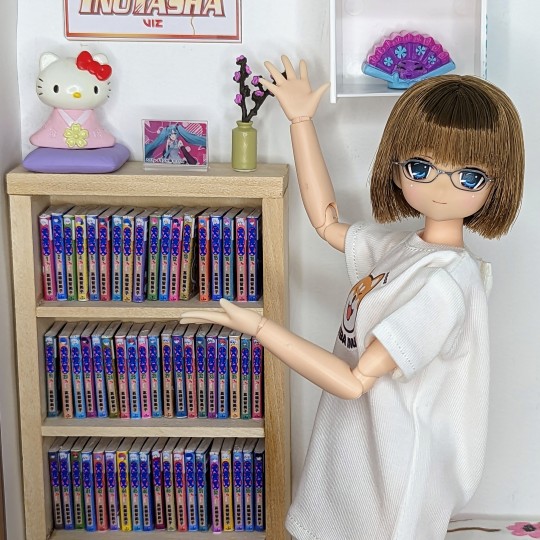
Relaxing in bed, reading from the beginning:

Why yes, she is reading the Inuyasha manga on an Inuyasha pillow :D

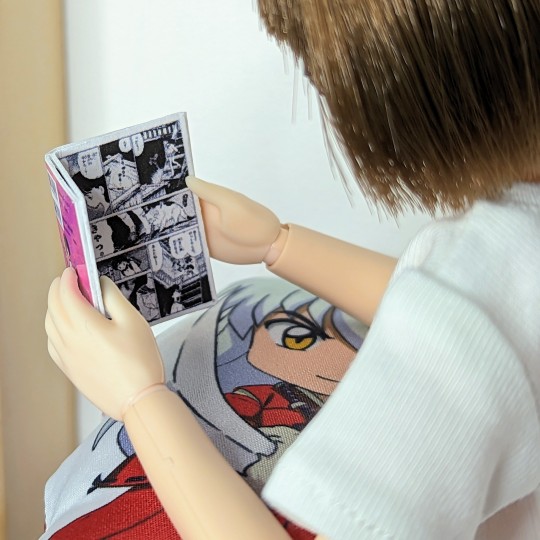
All 56 volumes on the bookshelf:

What do you do with an Inuyasha shirt tag? Make an instant doll poster, of course!

Front covers:
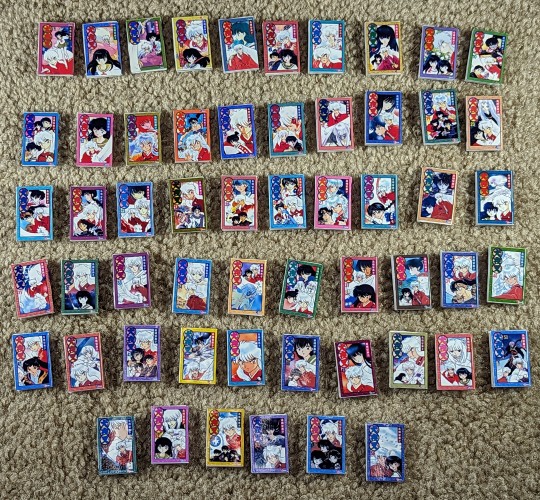
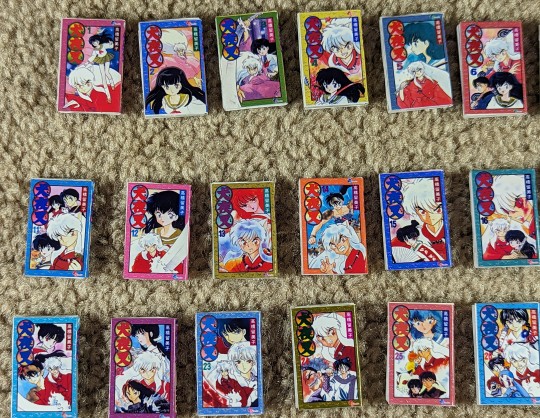



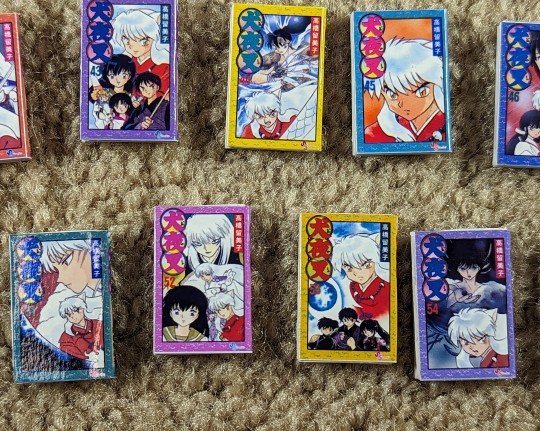
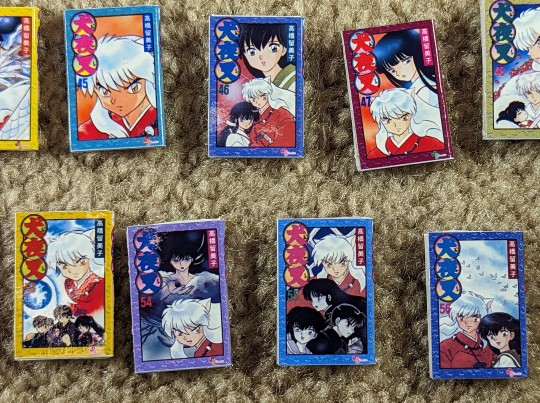
Back covers:
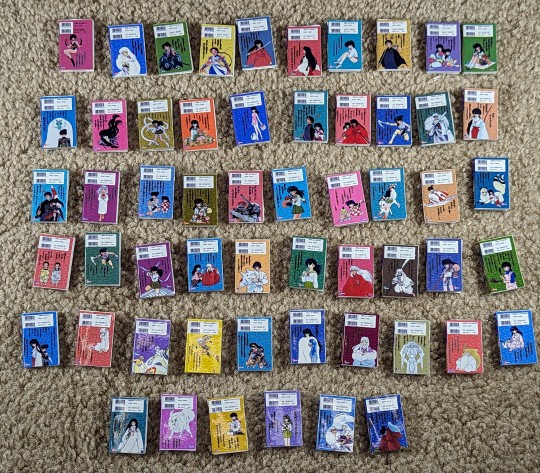


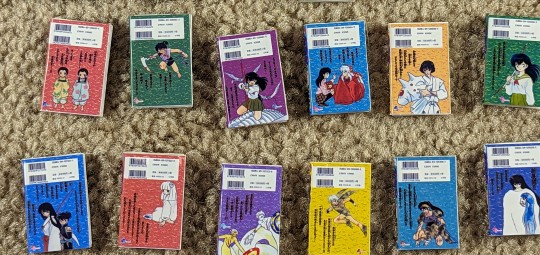


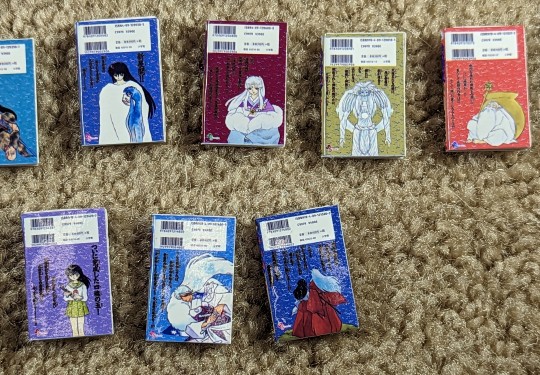
Volume 1 pages (glued in order, right to left):

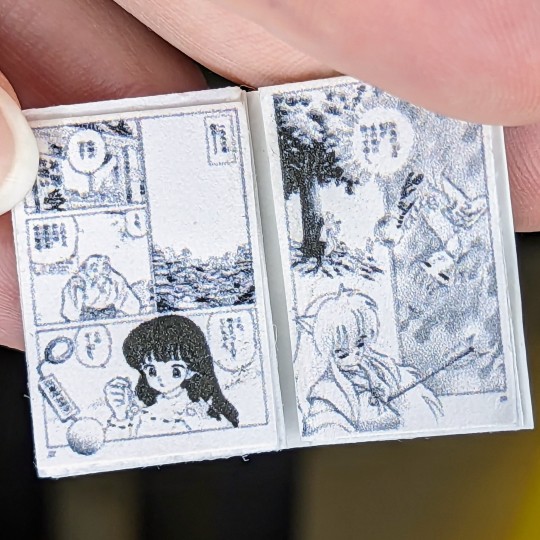
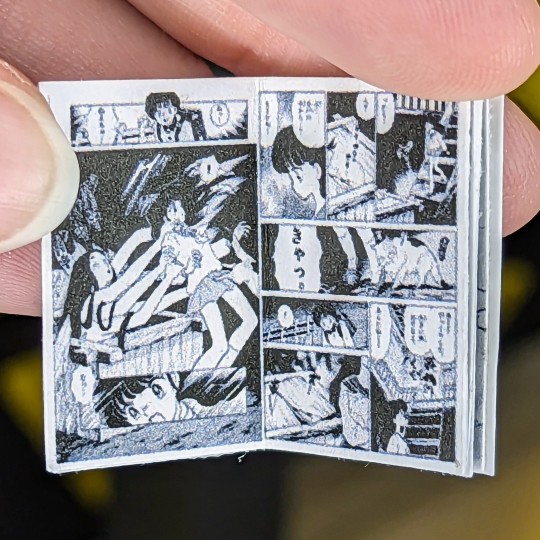
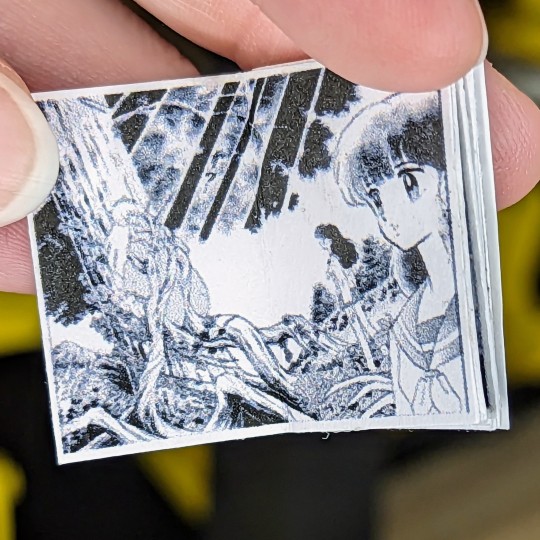
Size reference (shown with American penny):

#my plastic life#doll photography#one sixth scale#azone international#azone pure neemo#azonejp#Kiku Ningyo#Inuyasha#manga#anime#anime doll#tenderwolf#myfroggystufffanpics
135 notes
·
View notes
Text
It's March 3, which means it's time for hinamatsuri! Kiku loves checking out this festival every year. A Japanese festival with a big emphasis on dolls? We're both there! She's currently enjoying two different displays.
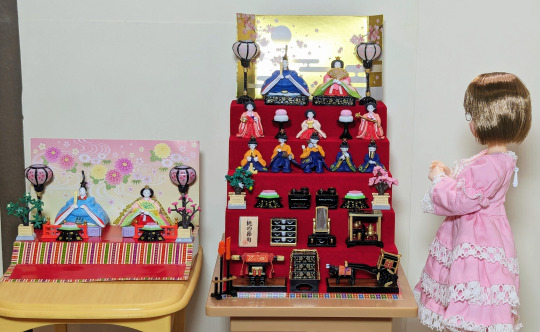
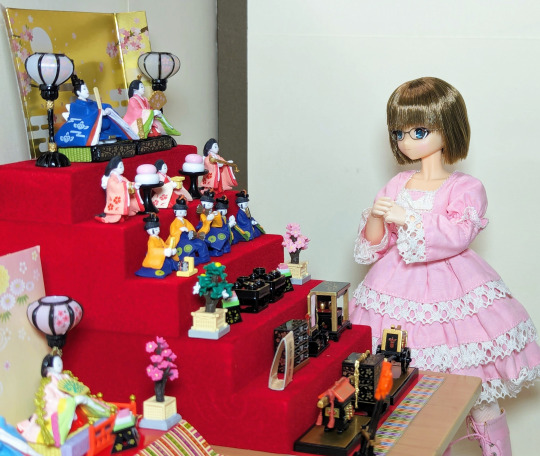
Hinamatsuri is an annual festival in Japan known as the doll festival or girls' day. The day is meant to celebrate having a daughter. The festival was traditionally known as the Peach Festival, as peach trees typically began to flower around this time. This is no longer true since the shift to Gregorian dates, but the name remains and peaches are still symbolic of the festival.
The primary aspect of the festival is the display of festival dolls in an elaborate fashion. Layers of dolls are displayed, with the emperor and empress on the top. The most recent emperor and empress were enthroned in 2019, marking the start of the Reiwa Era. While there are many ways to display these dolls, a full set of festival dolls includes seven platforms as follows:
1. Emperor & empress 2. Ladies of the court 3. Musicians 4. Ministers 5. Servants 6. Personal items of the royal court 7. More personal items of the royal court, plus hishi mochi
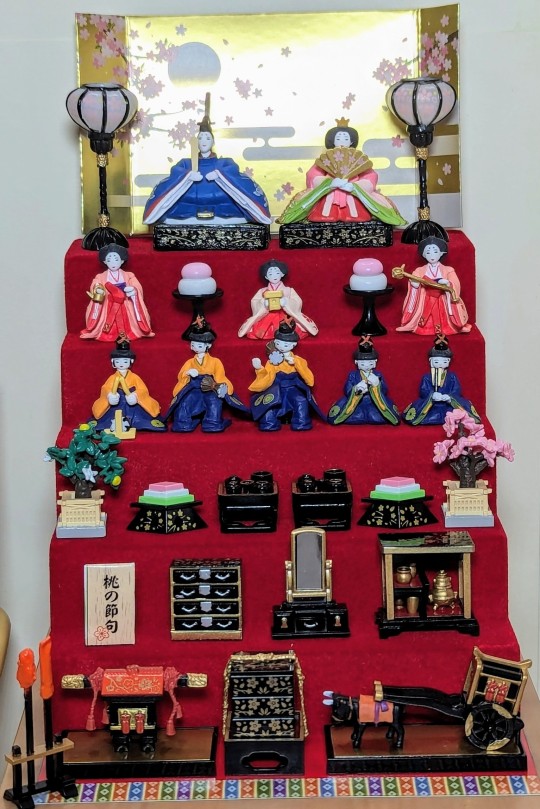
Emperor & empress:


Ladies of the court:



Musicians:
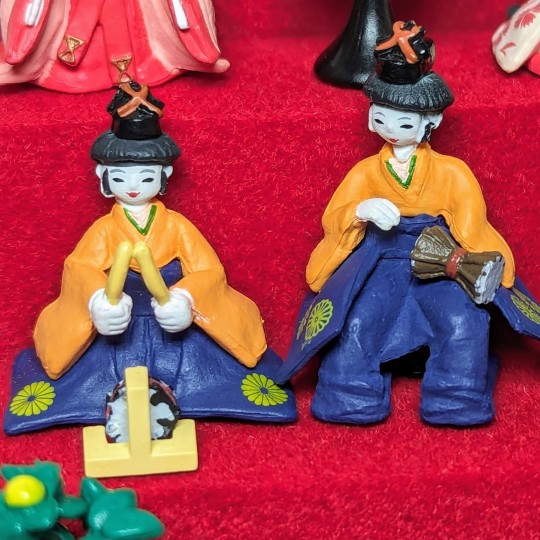
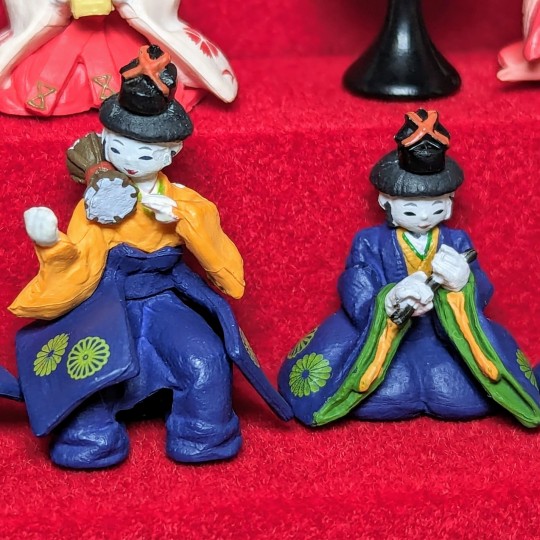

Personal items of the royal court and hishi mochi:

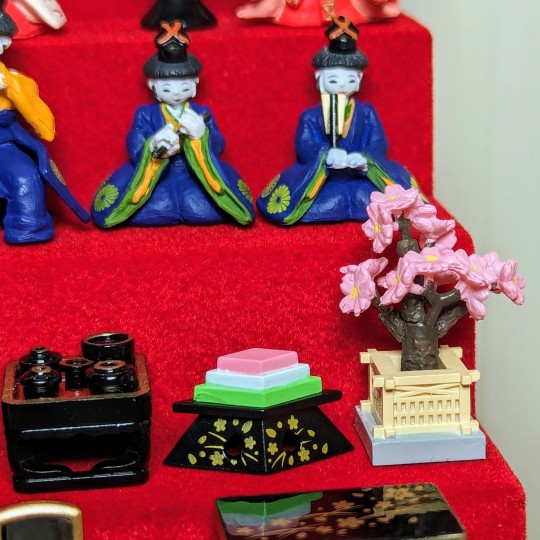



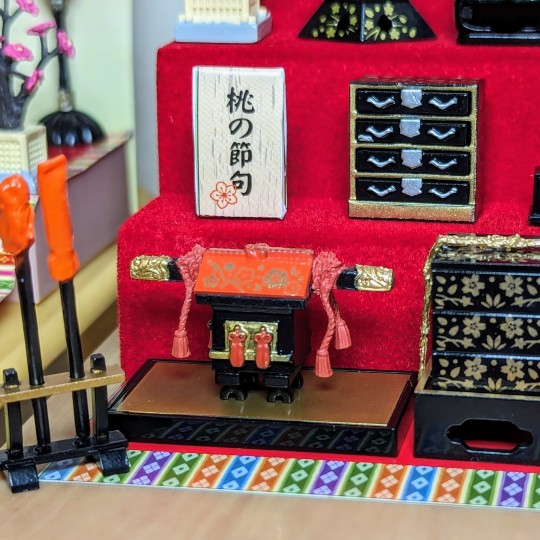
That was the new 2023 Re-Ment Hinamatsuri set. I also have this set in my collection from 2011, which features only the emperor and empress.

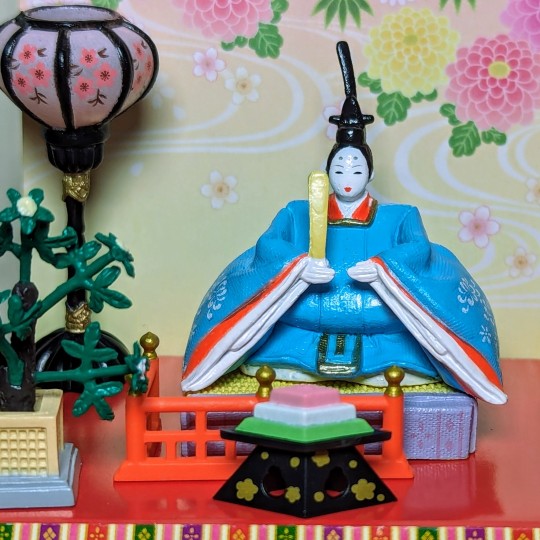

During this special time, girls also receive special sweets made of rice called hishi mochi. These sweets come in three colors: pink (meant to chase away evil spirits), white (symbolizes purity), and green (symbolizes health). The shape is believed to have originated in the Edo period, and to be a representation of fertility.
Handmade dolls are given to a young girl in February in a glass case, which is displayed prominently until March 3, then put away until next year (leaving them up on March 4 is believed to be unlucky and result in a late marriage for daughter). In many areas, the maternal grandparents still present the dolls.
This concludes today's daily cultural lesson. Enjoy!
#my plastic life#tenderwolf#doll photography#one sixth scale#azone international#azone pure neemo#azonejp#kiku ningyo#anime doll#rement#hinamatsuri#doll festival#japanese doll festival#girls day#myfroggystufffanpics
32 notes
·
View notes
Text
Happy tsukimi (moon viewing) day! The word "Tsukimi" literally means "viewing the moon," but it has come to refer to the entire celebration related to the Harvest Moon in Japan. Kiku is taking part!

In Japan, dango (round glutinous rice cakes) and silver grass are displayed in homes during the Tsukimi celebration. The reason behind this custom comes from the festival celebrating the crops. The silver grass represents the rice grains and wishes for good crops for the year, and it is also said to ward away evil. The round rice cakes (dango) represent the full moon and have been used as an offering to pray for the good health of children and their descendants. Chestnuts and green soybeans are also common offerings for tsukimi. It’s also common to display some vegetables like cucumbers and eggplants using bamboo sticks to make them look like animals. Kiku is offering and displaying all of these customary items.

Most people in Japan enjoy a relaxing tsukimi celebration at home gazing up at the moon while sipping sake under the moonlight. Kiku apparently doesn't have any sake, so she's enjoying some traditional delicacies instead - rabbit-shaped mochi and moon cakes! Other common meals during this celebration feature raw eggs which represent the full moon.




In Japan, it is said that there are rabbits on the moon. The belief has derived from the shapes of the craters on the moon which are said to look like rabbits. Therefore, many songs about the tsukimi commonly feature rabbits. Here in the U.S. and Western cultures, we see a “man in the moon.” For Japan, it’s the “rabbit in the moon.” Instead of a man’s face, you see a rabbit making mochi (rice cakes). There’s an old legend about the origination of the “moon rabbit,” including the belief that rabbits originally came from the moon. As a result, many promo and souvenir items involving tsukimi feature rabbits.


Happy mid-autumn festival, everyone!
#my plastic life#tenderwolf#doll photography#one sixth scale#azone international#azone pure neemo#azonejp#kiku ningyo#anime doll#tsukimi#moon viewing festival#japanese moon viewing#mid autumn festival#moon rabbit#japanese moon rabbit#tsukimi rabbit#tsukimi mochi#moon cake#moon viewing#myfroggystufffanpics
12 notes
·
View notes
Text
Continuing my celebration of Hello Kitty's 50th anniversary! Of course I had to bring out ani-ME since this kawaii cat originated in Japan. Kiku is spending the day at Sanrio Puroland, enjoying some souvenirs and sweets, and she's even found a themed hotel room!
Hello Kitty-themed dango:


The perfect souvenir!

Relaxing in the adorable themed hotel room (love the couch I found!):

One more souvenir:

#my plastic life#tenderwolf#doll photography#one sixth scale#azone international#azone pure neemo#azonejp#kiku ningyo#anime doll#hello kitty#hello kitty 50th anniversary#sanrio#mini brands#rement#myfroggystufffanpics
7 notes
·
View notes
Text
Next up for Kiku's Japanese New Year ritual: Obtaining an omamori and an ema!
Omamori are Japanese amulets or good luck charms that are said to protect against evil spirits and bring good luck. Omamori are usually small pouches made of embroidered brocade that contain prayers written on paper. They come in many shapes, sizes, and prices. Omamori are meant to be kept on your person, such as on a backpack or purse. You should not open an omamori, as this is said to release its blessings and make it useless. You should also replace your omamori after about a year, as its "power" is said to only last that long. Instead of throwing away the previous year’s omamori, bring it to the shrine it was purchased from and return it to the staff so they can dispose of it properly.


An ema is a wooden plaque used to write goals and wishes at Shinto shrines and Buddhist temples. It's also common to draw on these shogi (Japanese chess piece-shaped), especially the current year's animal (2025 is the year of the snake). Ema are left hanging up at the shrine, where the kami (spirits or gods) are believed to receive them. Kiku has written wishes for good health and success this year, as well as some cute drawings of this year's animal!


#my plastic life#tenderwolf#doll photography#one sixth scale#azone international#azone pure neemo#azonejp#kiku ningyo#anime doll#japanese new year#japan#new year#year of the snake#ema#omamori#japanese shrine#hatsumode#myfroggystufffanpics#rement
5 notes
·
View notes
Text
Japanese Summer Festival, part 1
(PART 1 due to a limit on number of photos per post)
Wow, more than a month since my last post! I'm slacking! But I have a good excuse - I was working on a HUGE project. This is my biggest scene to date. It's so large it won't fit in my usual diorama cube box. This was on my coffee table, and for an example of scale, that table measures 48" wide by 26" deep. And it was all covered LOL
It's still technically summer, and in Japan, summer festivals are a very popular pastime. I've wanted to create an actual festival scene for a while, and I finally took the plunge this year. My husband used his Glow Forge to create the little food stalls, and I created the rest. The awnings, booth covers, prices, signs, posters, floor, walls, etc. are all made by me. I also painted the silver on the booths. They're technically still a bit under scale compared to real life stalls, but I was basing my measurements off actual props I had, most of which are Re-Ment. There are even a few Re-Ment festival sets, so I had to use those! And next year I plan to add even more stalls - but I'll have to alternate what's on display since I think I'm at my limit of what will fit on that table LOL.
So here we go, a 1/6 scale Japanese summer festival! We've got lots of food street stalls (yotai) and a few popular games, and all the girls are wearing kimonos (a popular tradition).
Looking down the street toward the stairs leading to more fun (through a real torii gate!):

Overview:


Looking down the street toward the shrine:

Cold drinks are important to beat the heat!


Miwa is watching Kiku try her hand at yo-yo fishing:

Kiku is yo-yo fishing. In this game, you're meant to use a hook attached to a paper rope to pick up a water balloon. The balloons are filled with air and water, and they're called yo-yos because of the bouncing effect they have. This game can be difficult due to the rope being made of paper and the balloons are in the water.

Miwa has a popular snack - a tornado potato - along with the popular Ramune drink:

She got one! Any balloons that you successfully pick up with the hook can be kept.

Goldfish scooping. This game requires you to use a small wand called a poi to try to catch goldfish. The poi's net is made of paper, which makes the game tricky because of the water. The game is over once the paper in the poi breaks. However, people will often get to take one of each fish home after trying even if they don't actually catch them.


Aika is watching the goldfish scooping game, carrying a bag of cotton candy:

Superball fishing. This game is like the goldfish scooping game, only the prize is super balls. I made these little tubs myself. The Re-Ment sets had the yo-yo fishing and goldfish scooping, but no superballs. So I took the measurements of those tubs, used TinkerCAD to create two boxes made to the same size, and 3D printed them. I then used some of the Miniverse resin (the recalled stuff, lol) to fill the tubs in layers, and I used beads without holes (they exist!) to make the super balls. I'm very pleased with how they turned out!


Takoyaki stand. Takoyaki is a bite-sized, ball-shaped dumpling made from batter and grilled, then filled with octopus, tempura, pickled ginger, and green onion:



A definite favorite in the summer - the shaved ice stand (kakigori). Similar to shaved ice in the U.S., with the Japanese variant, blocks of ice are shaved into fine flakes using special machines, then topped with flavorings like strawberry or melon syrup, sweet matcha (strong green tea) sauce, sweetened beans, or condensed milk.



Fuka got a variety of flavors on her kakigori! Yum! Meanwhile, Lycee is preparing to make some more - she'll use the little machine to grind that block of ice to shave it down into edible pieces:


Look closely at the lady below in the blue kimono and you'll see that she's tucked in a traditional uchiwa (hand fan) into the obi (belt) of her kimono. These fans are a must for summer festivals to help beat the heat, as well as add a more traditional look to the yukata (kimono).

Choco banana and candy apple stand. These treats are also popular - they're your traditional candy apple on a stick, and also chocolate-covered bananas on a stick covered in sprinkles.



Cotton candy stand. Another popular treat for festival-goers of all ages. The container on the counter features fortune sticks inside, and you're meant to reach in and pull one out. You then tell the miko (shrine priestess) what fortune you got on the stick, and she will give you a paper that explains your fortune.

Japanese cotton candy bags frequently feature popular anime or pop culture characters on them. I made these bags by using small jewelry bags, cutting off the Ziploc sealer, placing cotton balls inside (almost all festival cotton candy I've seen has been white), then sized down pictures of characters, printed them out on clear sticker paper, and stuck them on the bags. I'm very pleased with how they turned out!


#my plastic life#tenderwolf#doll photography#barbie photography#azone international#azone pure neemo#azonejp#kiku ningyo#japanese festival#summer festival#japanese summer festival#anime doll#doll diorama#takoyaki#kushiyaki#cotton candy#choco banana#matsuri#yoyo fishing#goldfish scooping#superball scooping#apricot candy#japanese shrine#torii gate#myfroggystufffanpics
13 notes
·
View notes
Text
Do you have a favorite fruit? Kiku loves all thing strawberry! From the berry itself to strawberry shortcake to strawberry ice cream to strawberry milk, she’s gotta have it! And her wardrobe reflects her love of the little red berry, too!
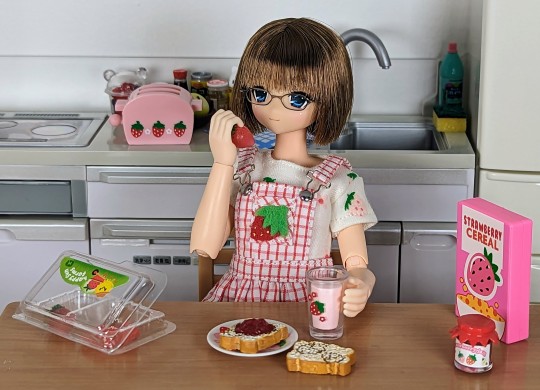
Strawberry milk (very popular in Japan!), strawberry patterns on her toast, and strawberry jam:
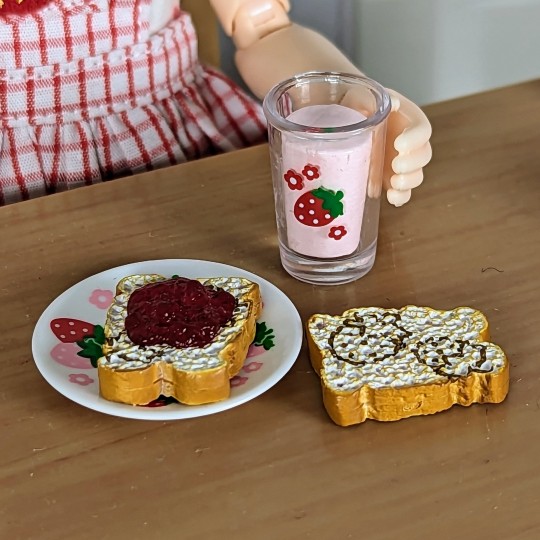
Strawberry cereal and jam:
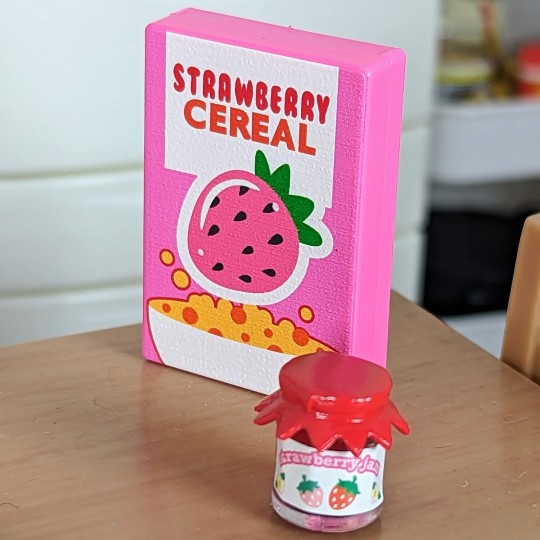
Sliced and whole berries:


Strawberry mochi, mmmm:

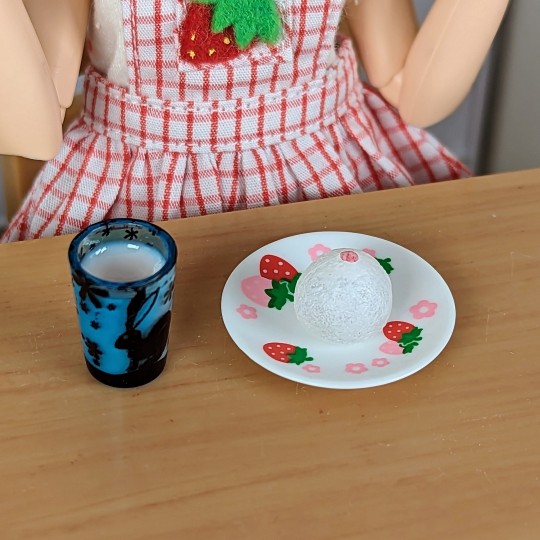
Now that summer is here, it’s a great time to break out this adorable outfit!
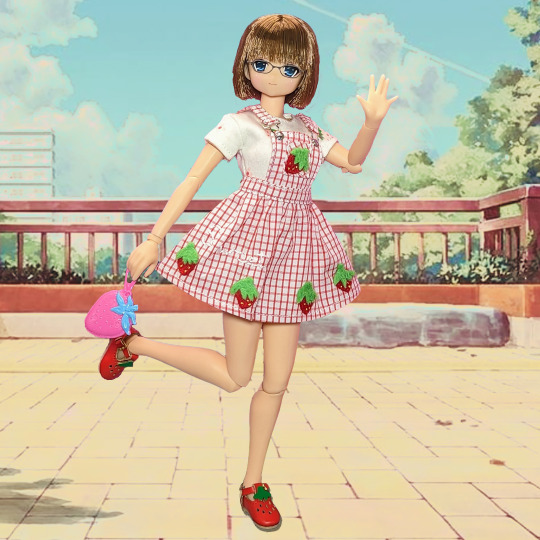
Aren’t these shoes the cutest?!

Matching clutch:
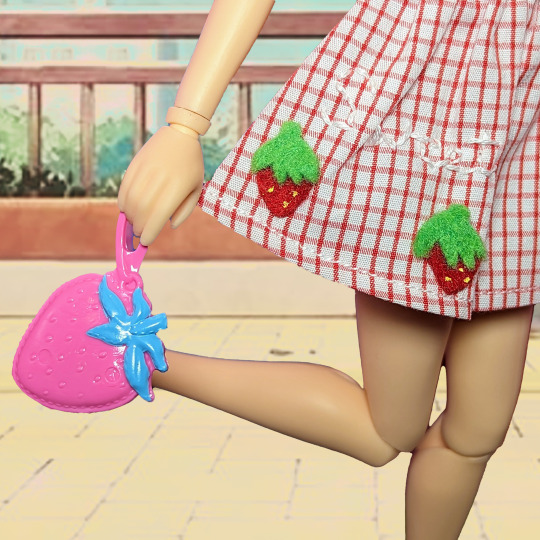
Stopping by Baskin Robbins for some strawberry ice cream:


When you can’t decide between a clutch and a backpack, you bring both :D

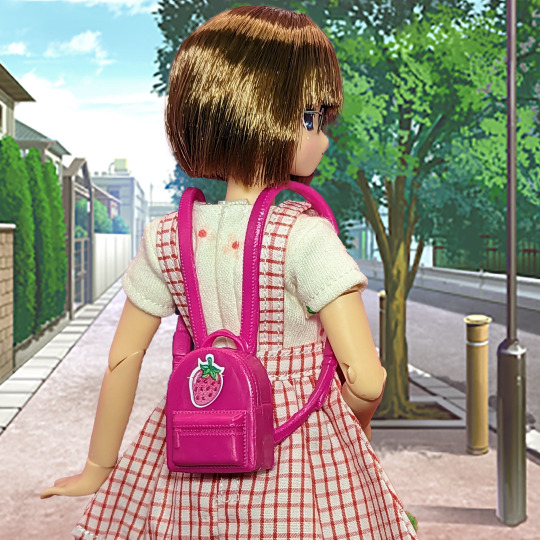
Even bedtime is sweet! :D She’s got a strawberry nightgown and strawberry plushies:
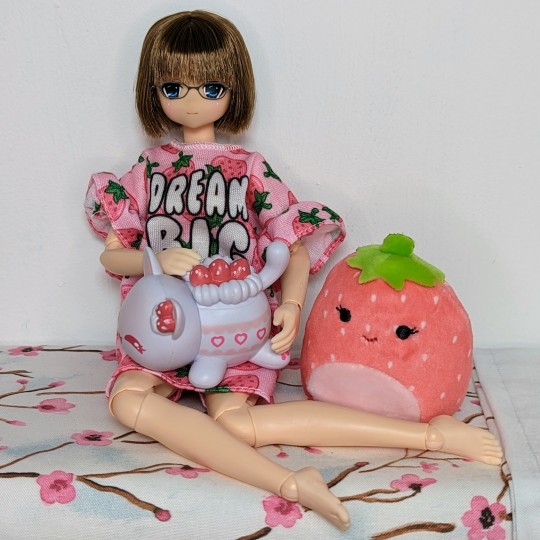
Strawberry shortcake Aphmau cat:

Strawberry Squishmallow:
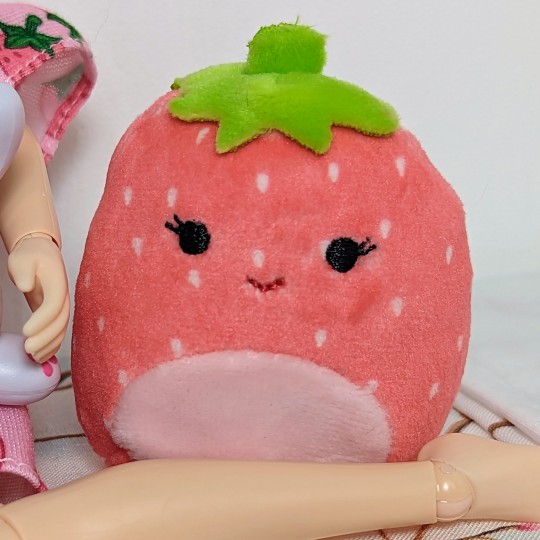
#My Plastic Life#doll photography#Azone#Azone International#Azone doll#azonejp#Azone Pure Neemo#one sixth scale#Kiku Ningyo#anime doll#strawberry#myfroggystufffanpics#TenderWolf#strawberry milk#strawberry ice cream#strawberry mochi#mochi
77 notes
·
View notes
Text
"Itadakimasu." Kiku is enjoying the typical Japanese Christmas Eve meal of KFC! :D And for dessert - the famous strawberry cake!
"Itadakimasu" (I humbly receive)
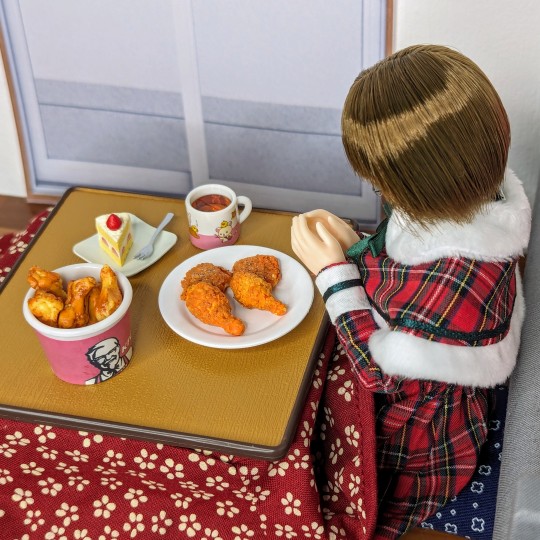
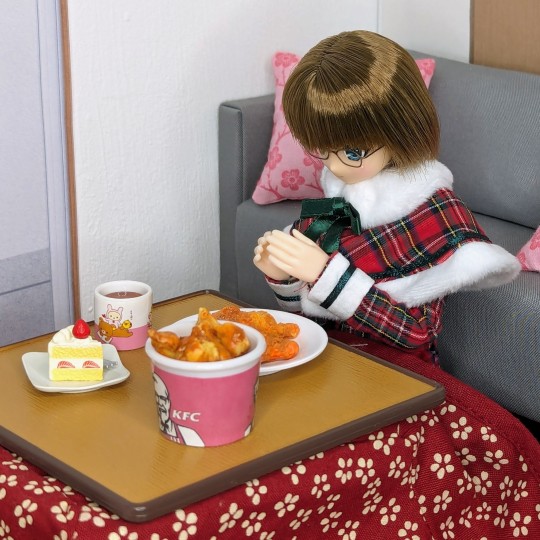
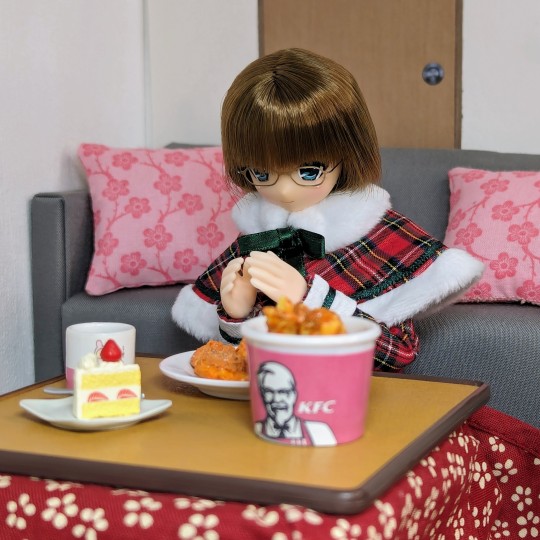


For dessert - strawberry cake!
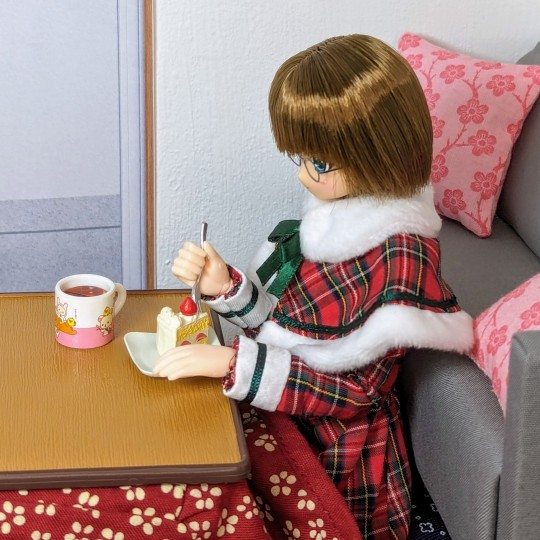
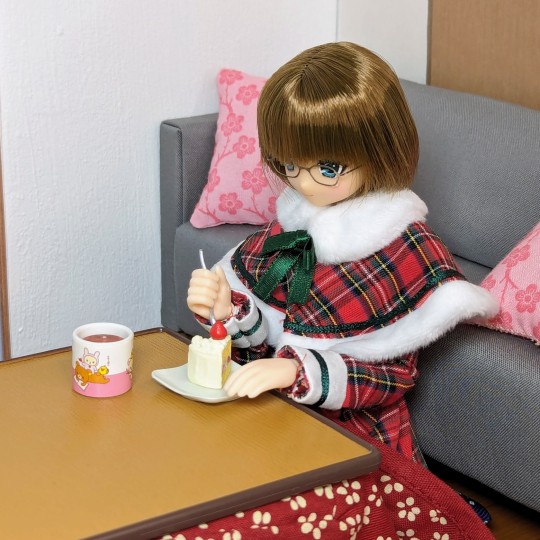
#my plastic life#tenderwolf#doll photography#one sixth scale#azone international#azone pure neemo#azonejp#kiku ningyo#christmas#japanese christmas#kentucky fried chicken#kfc#strawberry cake#christmas cake#rement#myfroggystufffanpics#anime doll
26 notes
·
View notes
Text
Closing out the day with some fukubukuro (lucky bags)! These bags can contain extra merchandise from stores from the past year, or they can be themed from certain manga, anime, etc. Kiku picked up some and is checking her stash. She got some cute Hello Kitty and My Melody items (from Hello Kitty's 50th anniversary, no doubt), as well as a Hatsune Miku acrylic stand figure, a cute cat alarm clock, and a wind chime.



#my plastic life#tenderwolf#doll photography#one sixth scale#azone international#azone pure neemo#azonejp#kiku ningyo#japanese new year#new year#year of the snake#fukubukuro#myfroggystufffanpics
4 notes
·
View notes
Text
It's January 11, which means it's time for kagami biraki!
To conclude the Japanese New Year celebrations, kagami biraki, literally meaning "opening the mirror" or breaking of the mochi, is typically held on January 11. The term "kagami" translates to "mirror," and "biraki" means "opening" or "to break." The ceremony involves removing the round-shaped mochi from the family altar and breaking them into smaller pieces before cooking them in dessert or soup to enjoy. Eating the mochi symbolizes a prayer for health and good fortune in the New Year.
To break open the ornamental mochi, one should never cut it with a knife. The action is a reminder of ritual disembowelment from ancient times, and it is considered a sign of bad luck. For that reason, the customary way to break the mochi is with a wooden hammer or with one’s hands. These days, it's very common for people to buy a plastic decorative kagami mochi at a store, which the small mochi pieces are inside.
Kiku has prepared the mochi for the ceremonial opening - she even found a large wooden hammer like in ancient times. :D


After the mochi is broken open, it's customary to cook the smaller pieces in dessert or soup. A common dish is zenzai, which is red bean soup with mochi. That's what Kiku went for this year!
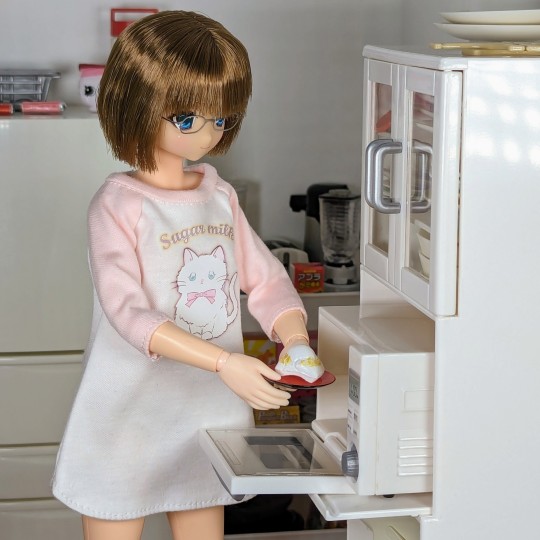

Time to enjoy that soup! Mmmm
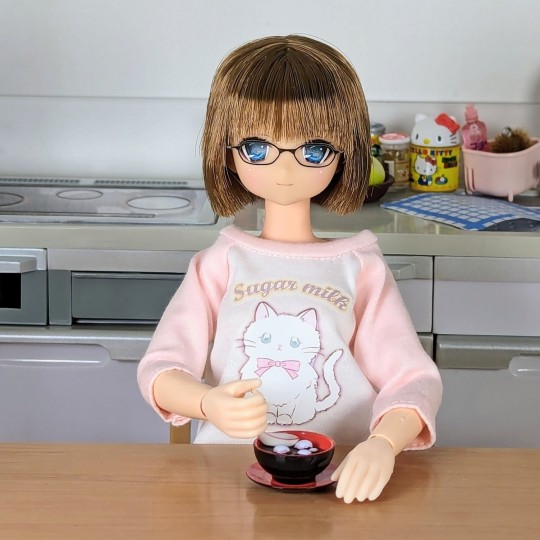
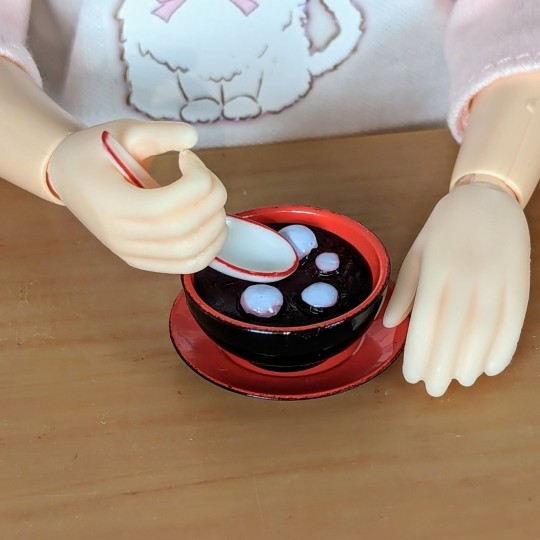
#my plastic life#tenderwolf#doll photography#one sixth scale#azone international#azone pure neemo#azonejp#kiku ningyo#japanese new year#kagami mochi#zenzai#rement#red bean soup#orcara#anime doll#mochi
22 notes
·
View notes
Text
Time to consume the final meal of the year: toshikoshi soba noodles! The long strands of these buckwheat noodles symbolize the wish for long life, while the firmness to the bite and ease of cutting of soba is associated with the intent to “break off the year” with ease. Kiku is also enjoying some Japanese sake, the most traditional drink to be paired with the noodles.


#my plastic life#doll photography#tenderwolf#one sixth scale#azone international#azone pure neemo#azonejp#kiku ningyo#anime doll#japanese new year#sake#rement#soba noodles#soba#new year's eve#year of the snake#myfroggystufffanpics
4 notes
·
View notes
Text
New doll diorama is up! This one took a while because there are lots of props, plus I had to decide on the perfect design. :D
Have you ever been to a themed cafe? They're very common in Japan, ranging from anime to video games to role play. Some are permanent, others are pop up (temporary). The interiors are always completely decorated in the theme, and the food is also designed in accordance with the theme. Most of these places also have gift shops where you can purchase exclusive items ranging from stationary to clothes to figures to plushies, all revolving around the cafe's theme. So fun!
I tend to always do things in themes, so this was right up my alley. I just knew I wanted to make my own Japanese themed cafe diorama. There is no shortage of options, but I decided on a Gudetama cafe. Gudetama is a Sanrio character, and his name literally means "lazy egg." This adorable little egg can be seen in a variety of scenarios, usually being prodded to not be lazy. It's quite amusing! I looked up actual Gudetama cafes so I could make my design as authentic as possible. Almost all of them featured bright yellow walls in a variety of patterns with huge wall decals of the star character on them. Smaller wall art was also common, and the wood floors even had a yellowish hue to them to finish off the look. Statues and figures were also prominent, so I placed a white cube shelf in the scene to hold some of my mini Gudetama items I've had for a long time (didn't even have to buy new stuff for this scene!), as well as the menus and place mats that I made. I also painted all the chairs yellow (they were originally purple) and painted the table base white (they were pink). The booth is borrowed from the Licca-chan revolving sushi set.
So here we have a group of dolls enjoying the themed goodies! All the food items are from Re-Ment, and the sets included a lot more - I just couldn't fit any more dolls in there LOL. And of course, this being Japanese themed, I had to use my Azone dolls. They're a better fit for these chairs and tables anyway since they're not as tall as Barbie, so they fit her size furniture better than she does LOL. Plus - interchangeable hands! YES!
Overview of the diorama showing all the wall art and designs:
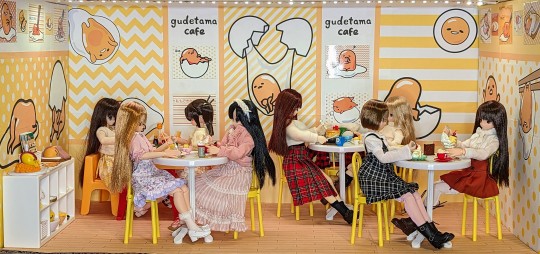


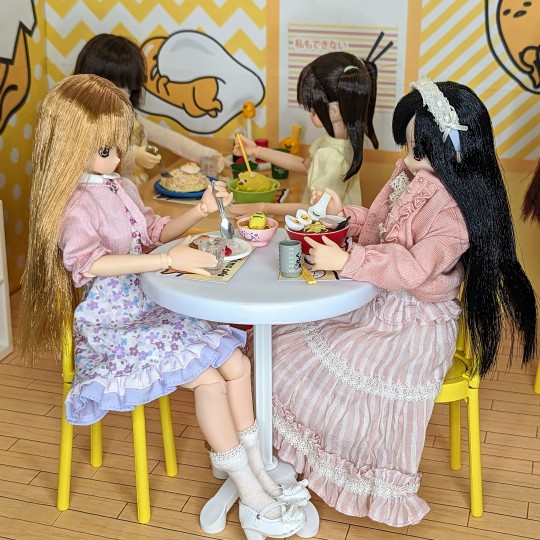
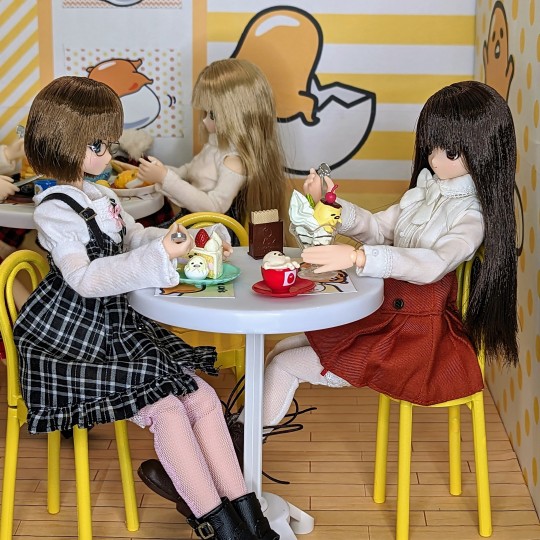
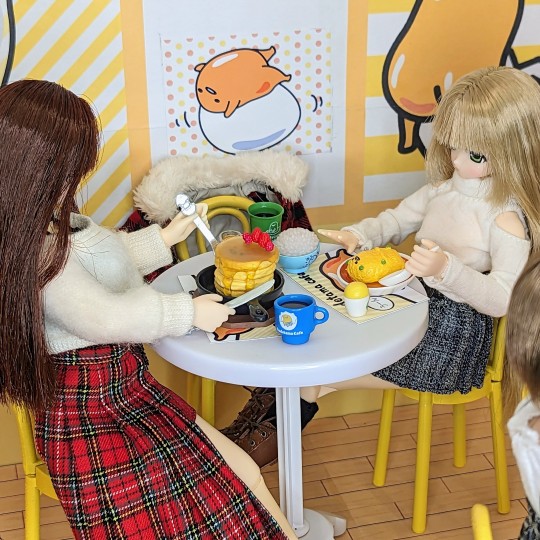
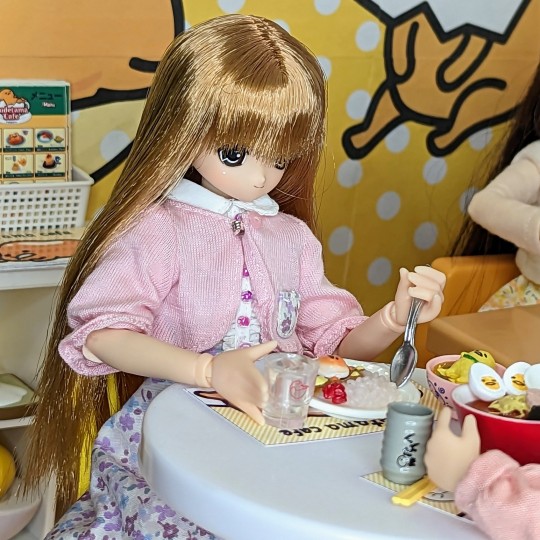

Left plate: Curry. Right plate: Ramen.

Curry:
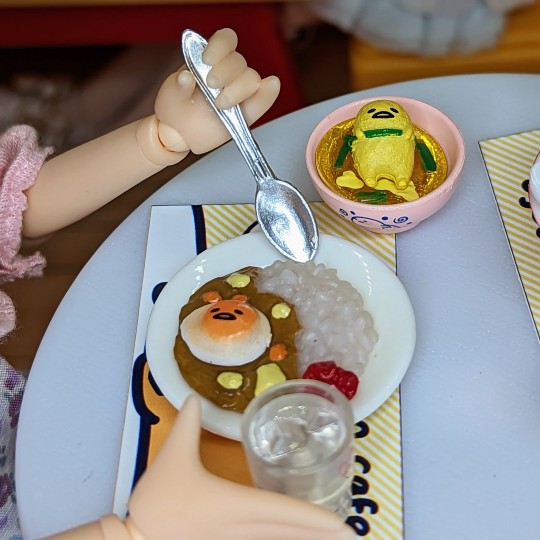
Ramen:
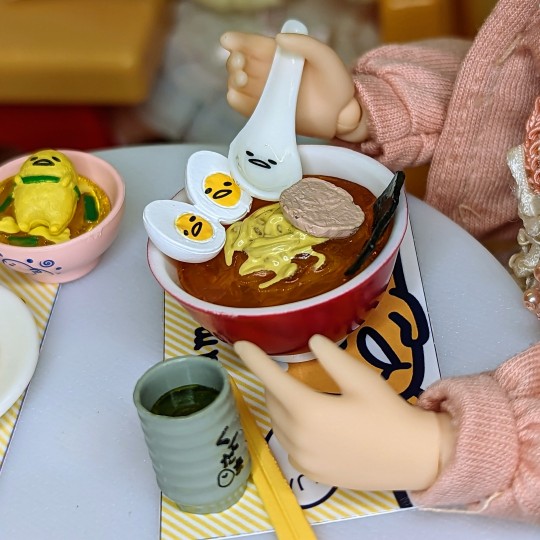
Of course ani-ME is on the dessert :D
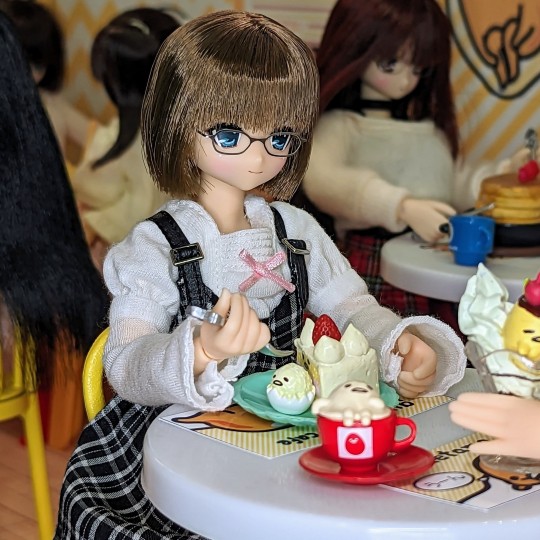

Left plate: Cake & ice cream. Right plate: Parfait.

Cake & ice cream:
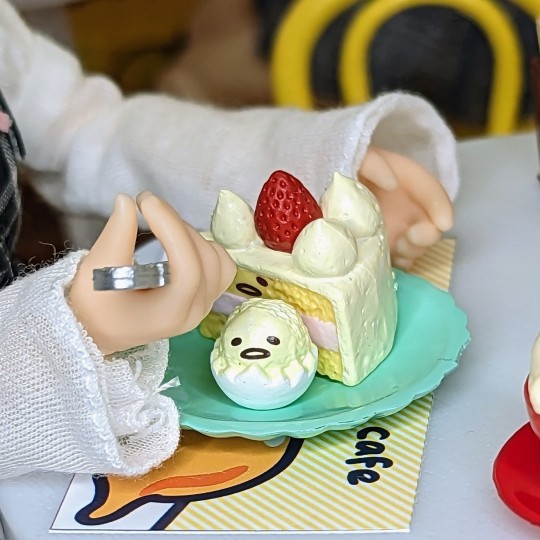
Parfait:
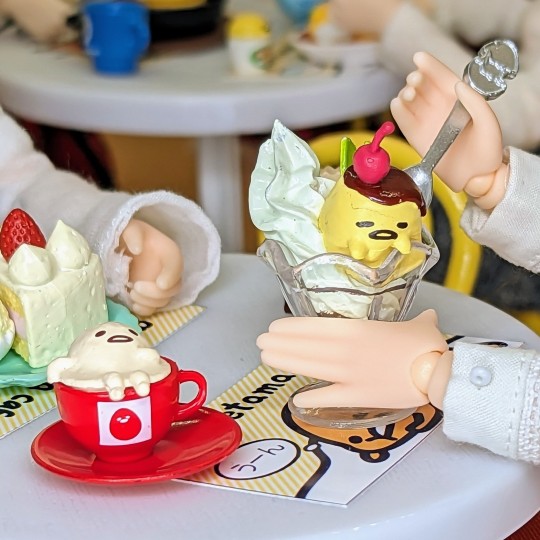
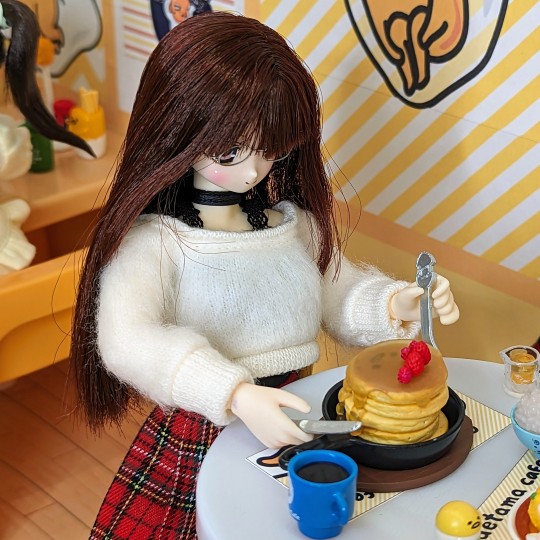
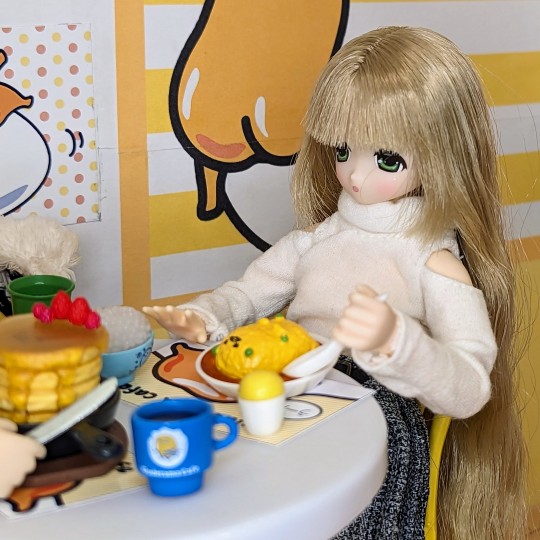
Left plate: Hot cakes (aka pancakes). Right plate: Kanitama (crab omelet).
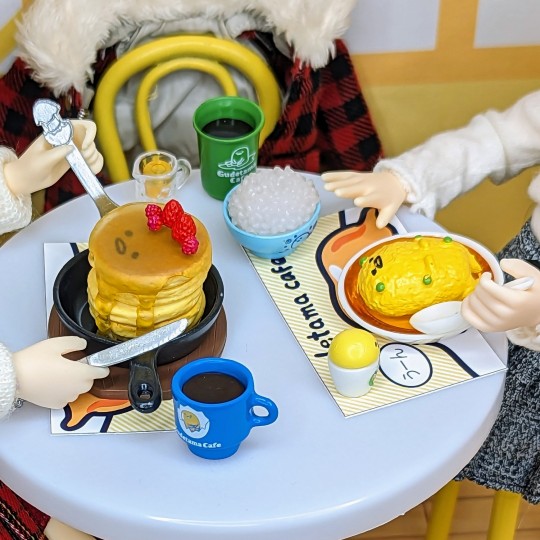
Hot cakes (aka pancakes):

Kanitama (crab omelet):


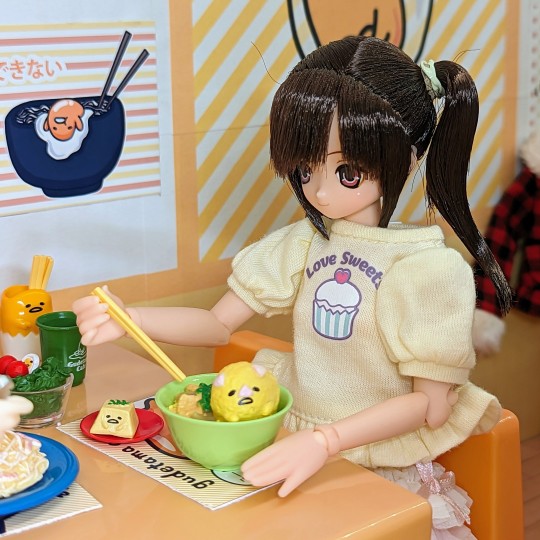
Left plate: Ramen, fried egg, & salad. Right plate: Butatamadon (pork rice bowl).
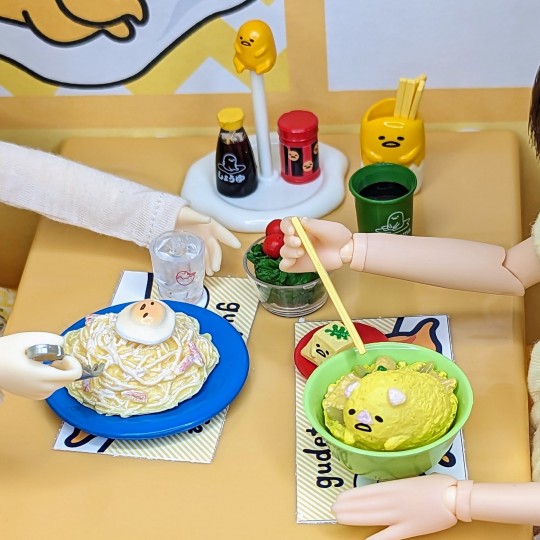
Butatamadon (pork rice bowl):
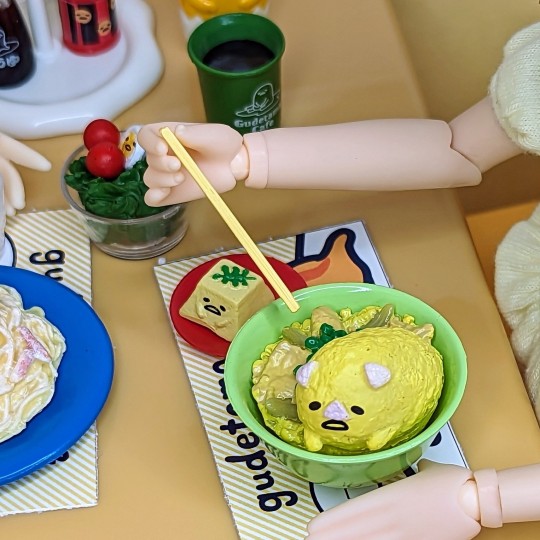
Ramen, fried egg, & salad:
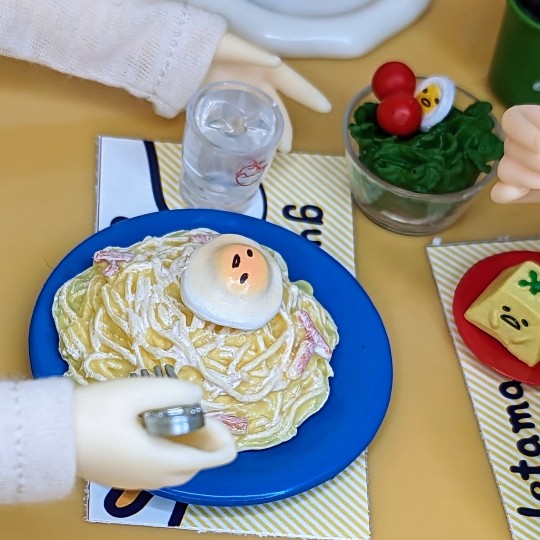
Cube with various Gudetama figures/merchandise, plus the menus and place mats I made:
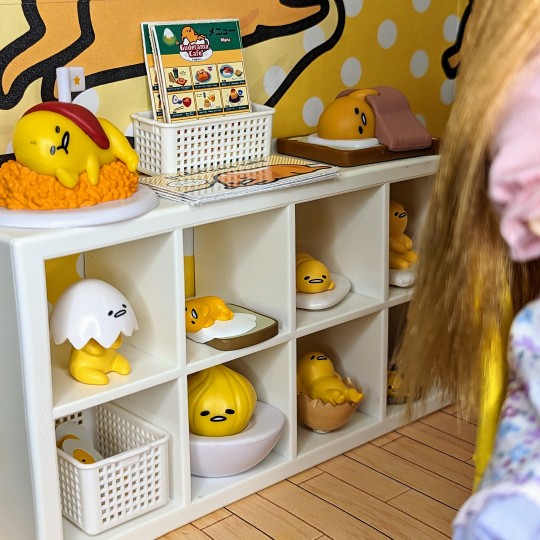
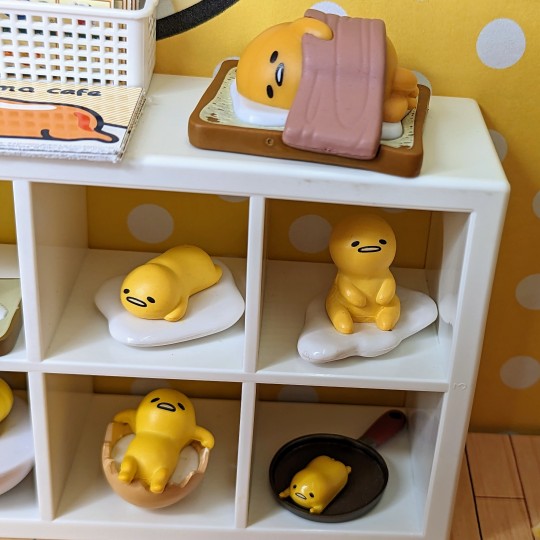
Menu (two-sided) Fun fact: Every single item on the menu is a genuine Re-Ment Gudetama product. I don't have every set, but I included them on the menu anyway:
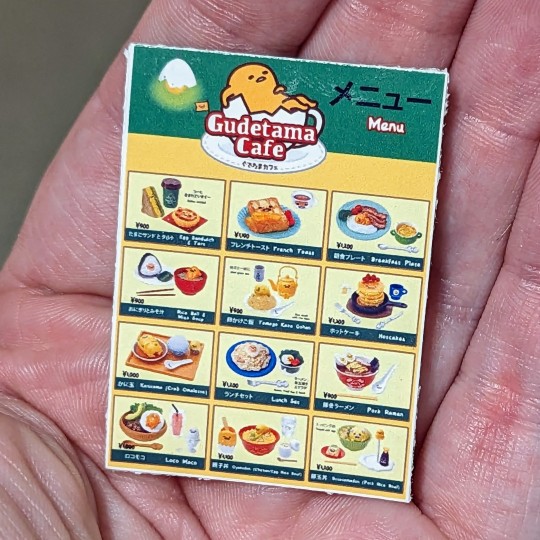

#my plastic life#tenderwolf#doll photography#one sixth scale#azone international#azone pure neemo#kiku ningyo#anime doll#azonejp#gudetama#gudetama cafe#themed cafe#japanese cafe#japanese themed cafe#japanese doll#rement#myfroggystufffanpics#azone aika#azone fuka#azone alisa#azone lycee#azone himeno#azone miu#azone koron#doll diorama
25 notes
·
View notes